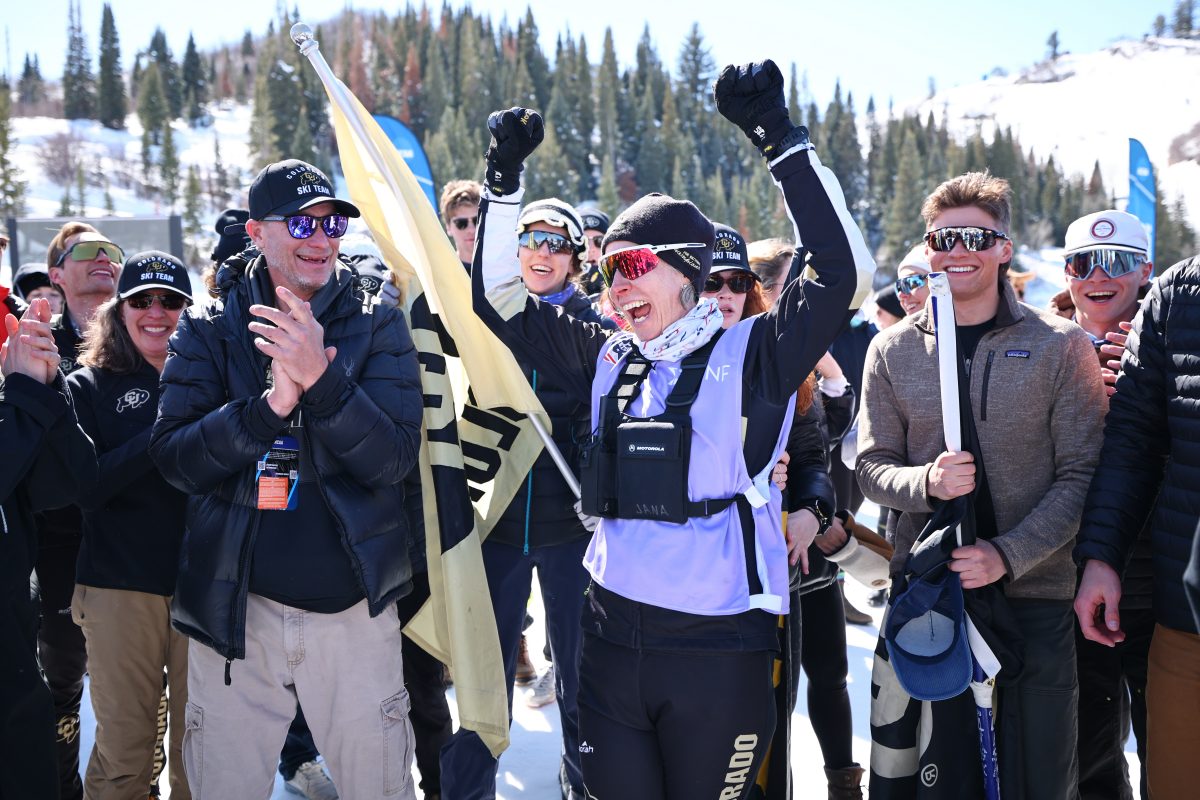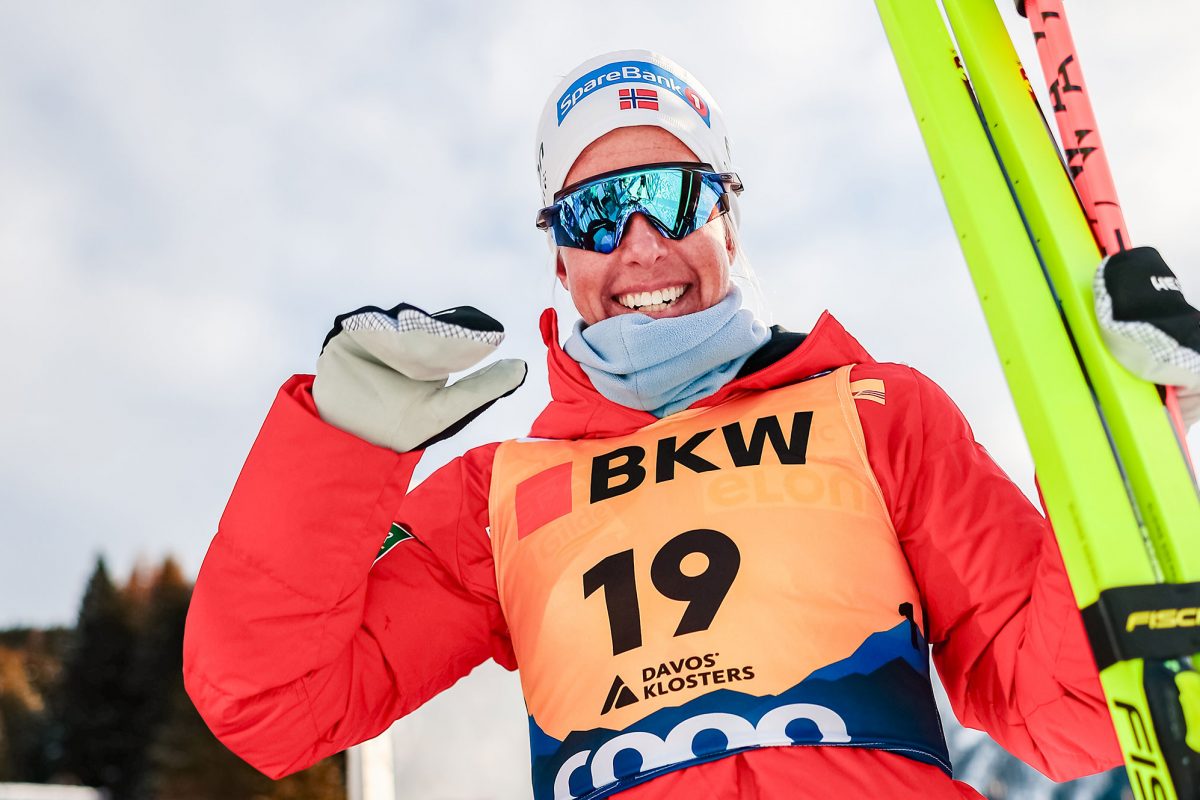
With its mysterious powders and liquids, secret chemical formulas, and lung-choking clouds of toxic smoke, one could mistake World Cup ski waxing for evil sorcery, with eastern-European alchemist-technicians doing their dirty work in dank, dark trailers.
Until, that is, you stepped into the U.S. Ski Team (USST) wax room at the pre-Olympic World Cup races in Canmore, Alberta. There, you’d find a pair of affable Swedes calmly going about their business in a tidy, well-lit workspace. For Peter Johansson and Joakim Augustsson, ski waxing is no sinister science—instead, it’s an art.
Along with Randy Gibbs, who was already in Vancouver to prepare for the 2010 Olympic Games, Johansson and Augustsson form the core of the

American service team. Armed with more than 20 pairs of test skis and half as many wax brands, their mission in Canmore was the same as every other weekend during the winter: to make the team’s skis run as fast as possible.
It was a Thursday afternoon in early February, and with races on Friday and Saturday, the technicians were well into their testing regimen. With its consistent temperatures, man-made snow, and open trail system, Canmore posed relatively few challenges to the service staff, in contrast to some of the other venues on the World Cup circuit. At the city sprint in Dusseldorf, Germany, for example, snow is trucked in overnight, and teams don’t have the opportunity to test until the day of the race.
There was less pressure in Canmore, too—many of the USST athletes were looking for their top results a few weeks later, at the Olympics. But the straightforward conditions and ample prep time didn’t mean that anyone was taking it easy: the staff still began their testing long before the first race.
Unlike many other countries, which leave the ski preparation to a separate crew, the American coaches pitch in, too. In Canmore that day, Augustsson and Johansson were getting help from Chris Grover, Justin Wadsworth, and Pat Casey.
Earlier in the week, the team had been testing different ski flexes; once those were nailed down, they moved onto grinds and structure. Wax was the final component.
Art, Not Science
More than anything, the job of a wax technician is about experience and hard work, Johansson said—it’s not science. With dozens of venues and far too many variables to control, “there’s no static way to do it.”
When courses are closed or when the wind skews speed traps, the staff has to make decisions entirely based on feel.
If you’re testing ten different brands of ski wax, like the Americans were doing in Canmore, it’s a lot to keep track of. But their data was meticulously recorded in a tiny notebook.

For picking structure and glide waxes, the USST uses 15 different pairs of test skis. Another six pairs are used to select klister and hard wax. And while those are intimidating numbers, they don’t even include the athletes’ boards. Augustsson, who deals with Kris Freeman’s skis, said that he was working with 33 pairs.
On top of that, there’s all the equipment, like wax boxes, radios, and tables. On a recent trip to Estonia, Wadsworth was hauling around 11 pieces of luggage—250 kilograms-worth.
Much of that stuff, Grover said, stays in Europe, because it’s easier to have two different sets of gear than to carry it back and forth between continents.
The Swedes
As cross-country skiing has grown into a global sport, coaches’ and technicians’ allegiances to their own countries have weakened. And for some reason, Sweden churns out waxers.
“In the world of mercenary waxing, the Swedes are the guys that are out there working for a lot of other teams,” said Boulder Nordic Sport Technical Director Zach Caldwell, who was part of the American service staff at the Olympics.
An expert on glide, Johansson has been with the team for the last four years. He worked for SkiGo wax for a year prior to joining the team, and—no joke—in an iron mine before that.
Augustsson, who specializes in kick wax, has two seasons under his belt with the Americans. He has worked for the Russian champion Vladimir Smirnov and Team Japan; in the off-season, he’s a landscaper.
On the circuit, their schedule is brutal—Johansson grimaced when asked to contemplate the number of hours in his typical workday. (The answer? 12 to 14.) Both said that the hardest part of the job is spending time away from their families.

While many countries have a chief wax technician who heads up the service staff, neither Augustsson nor Johansson are officially in charge; they’re simply a part of a team. While others might chafe under such an arrangement, it works for the Swedes, who Caldwell said are the “most open-minded, least egotistical guys I’ve ever worked with.”
“They do a great job making everyone around them valuable assets,” Caldwell said, “and without someone in charge, everyone sort of acknowledges where they have expertise.”
Both men said they had no shame rooting for the Americans. And when the team does poorly, Johansson added, “it really bums you out.”
“They’re really invested in the athletes,” Grover said. “They really want to see these guys succeed.”
The two men try to get outside to watch the races, sometimes standing with spare poles at key spots on the course. But those chances are rare, Johansson said, because “there’s always work in the wax cabin.”

Nathaniel Herz
Nat Herz is an Alaska-based journalist who moonlights for FasterSkier as an occasional reporter and podcast host. He was FasterSkier's full-time reporter in 2010 and 2011.



